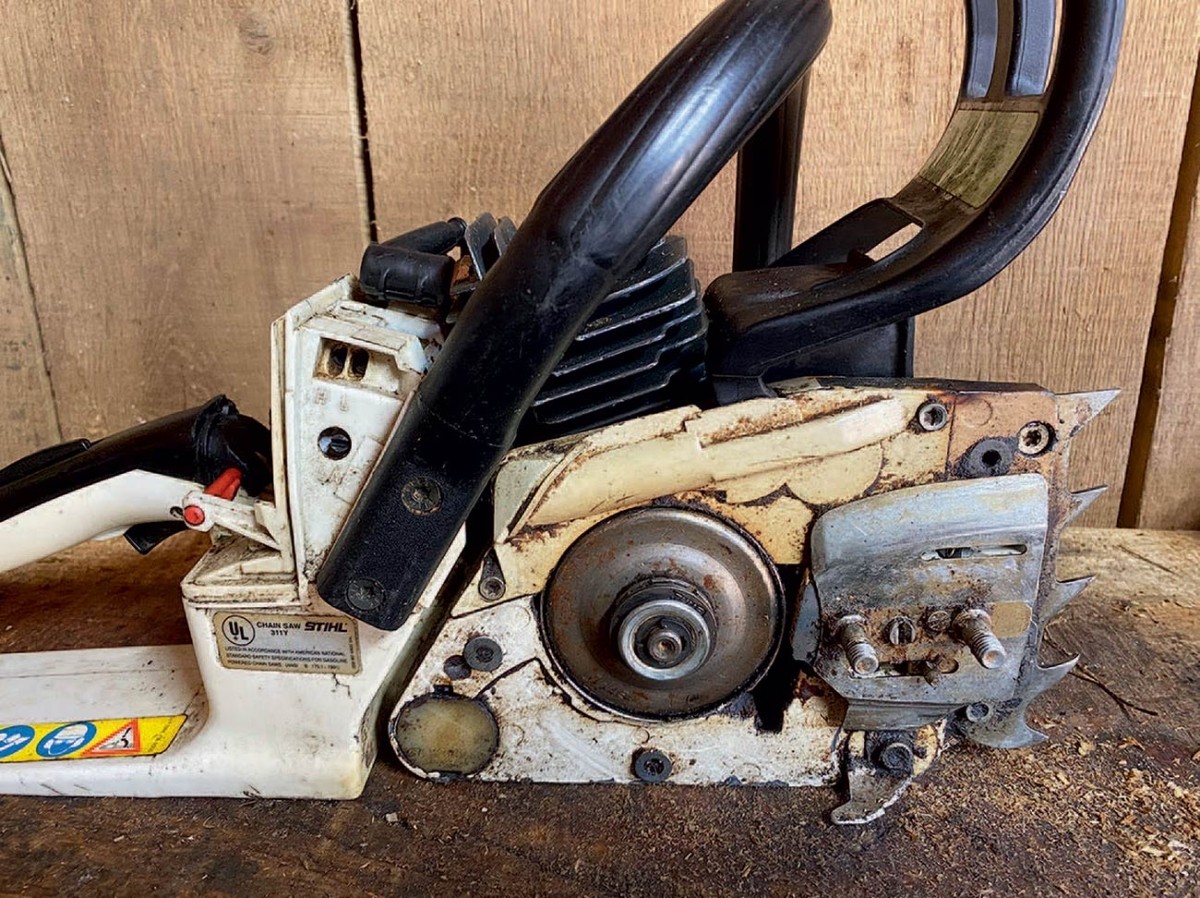
Recently, I taught a chainsaw safety course in which a student asked, “Where does all the bar oil go?” It occurred to me that this is a topic that gets relatively little attention, both in terms of how the oiler works and where the oil ultimately ends up.
Let’s start by talking about how your bar and chain lubrication system works. On most chainsaws, the bar oil pump is located underneath the clutch. The pump is driven by a gear (or sometimes a plunger) off the crankshaft. This means that as you accelerate the RPMs of your chainsaw, the rate of flow from the oil pump increases. That oil is directed through an oil groove that aligns with an oiler hole in the bar. The hole in the bar allows oil to work into the bar rails, thereby lubricating both the bar and chain.
This lubrication is essential to reducing friction. In cases where a saw runs without bar and chain oil, or where the oiler is defective, the nose sprocket of the bar can simply seize, while the bar rails and chain will develop premature wear. A saw with a properly operating bar and chain oiler will run cooler and operate smoothly.
To test your oiler, you can point the noise of your chainsaw bar at a piece of cardboard and hold the throttle wide-open. You should see oil residue accumulate on the cardboard within several seconds if the oiler is working properly. In addition to proving that your oiler works, this test also illustrates the fact that much of the bar and chain oil ultimately ends up in the environment, whether it sprays off the tip of the bar when limbing, becomes oily residue on saw chips, or falls from the sides of the bar on to bucked and blocked wood.
Little research exists on the environmental impacts of residual bar and chain oil, but common sense suggests that introducing petroleum-based lubricants into the environment is harmful. Some landowners (both private and public) have strict guidelines that prohibit the use of conventional bar and chain lubricants, especially near waterways.
As an alternative, there are nearly a dozen vegetable oil–based bar and chain lubricants on the market. Many use canola oil as the base and then add a biodegradable tackifier to increase the viscosity and to help the oil stick to the bar and chain. I have used several brands of biodegradable bar oil and all have performed as well as or better than conventional bar oil. The main limitation is that these products cost nearly twice as much as the cheapest conventional bar oil option.
Many loggers are happy to use biodegradable bar oil on a job if the landowner is willing to cover the price difference. Others reserve the use of biodegradable bar oil for working in areas adjacent to wetlands. For many of the readers of this magazine, our chainsaws serve in part as tools for forest stewardship. To that end, I encourage you to try biodegradable bar oil as an ecofriendly option.



